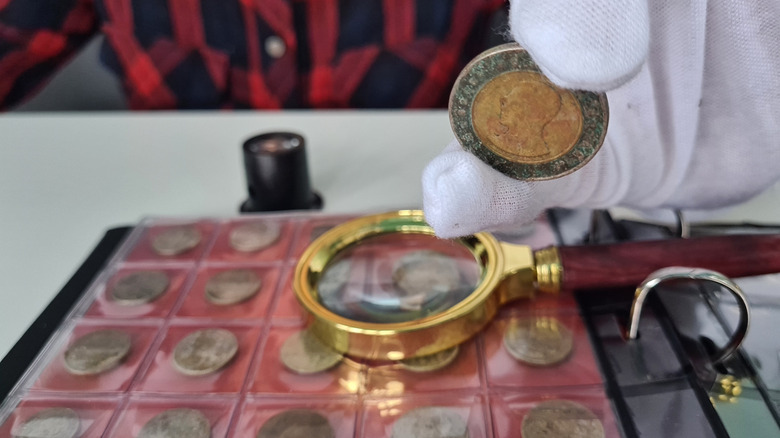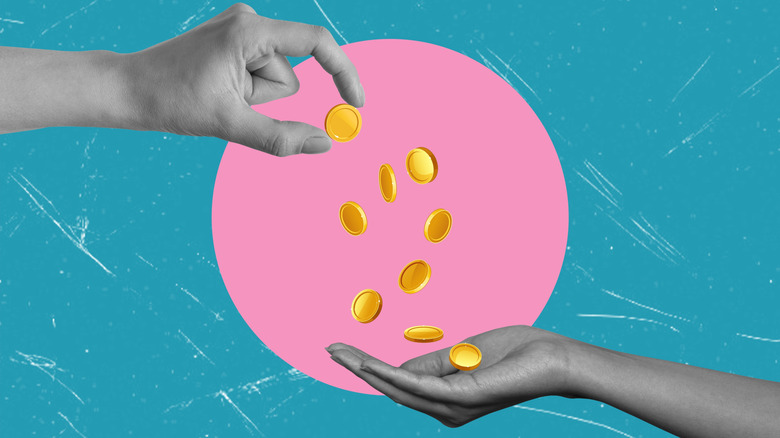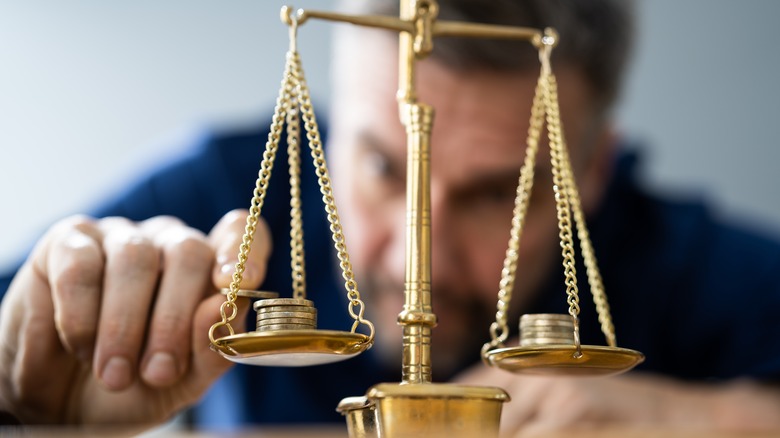One Of The United States' Last Gold Coins Is Worth A Fortune In 2025
The 1933 Indian Head Gold Eagle, a $10 coin, stands out in U.S. history as one of the last gold coins made before big changes in law. This series, which started in 1907, also included $5 and $2.50 coins, but only the $10 coin is as well regarded. That year, President Franklin D. Roosevelt signed an order that made private gold ownership illegal, aiming to help the economy during the tough times of the Great Depression. This order meant most gold coins, like the 1933 eagles, were supposed to be melted down. Only the ones considered collectible were saved, making any surviving 1933 coins super rare and valuable today.
In 1933, 312,500 Indian Head Gold Eagles were made, but today, only a few dozen are known to still exist. Most were taken back by the government and destroyed, but a few slipped through, probably saved by collectors who didn't know about the new rules. These coins became officially collectible in 1964 after the Treasury Department said gold coins made before 1934 were collectibles, not just regular money.
The design of these coins is another reason they're so special. Created by the famous sculptor Augustus Saint-Gaudens, the front of the coin shows Liberty wearing a Native American headdress. Because they're so rare, these coins can fetch more than $460,000 at auction, depending on their condition and history though this still does not compare to the price of America's first gold coin.
Current market value
The 1933 $10 Indian Head Gold Eagle is exceptionally valuable because nearly all of them were destroyed due to Executive Order 6102, with fewer than 40 known to still exist. While most were melted down into gold bars, some ended up in museums or were secretly kept by collectors, and these few became officially collectible many years later. Their rare status, combined with their historical significance, makes these coins extremely sought after. In 2011, a unique 1933 Gold Eagle coin variety sold at auction for $2.185 million. This coin, a 1907 Indian Periods Rolled Edge – Satin $10 PF, is noted for its rolled edge and satin finish, and typically grades MS-63 to MS-65.
Comparatively, other regular $10 Gold Eagles of high grade (e.g., MS-67) have fetched between $460,000 and $822,500 from 2005 to 2015. Lower-grade examples (e.g., MS-63) usually sell for between $340,000 and $400,000. These prices highlight the collector demand for coins in great condition; even slight wear can affect their market value. Still, this does not apply to all coin collectibles. For instance, some coins with a "die error" or a "doubled die" coins can make you richer. The unique allure of the 1933 $10 Gold Eagle coin stems from its status as the only coin from that year that can be privately owned without legal issues, setting it apart from the infamous double eagle gold coin and each genuine 1933 Gold Eagle comes with a well-documented ownership history.
Collecting the 1933 Gold Eagles
To acquire a 1933 Indian Head $10 Gold Eagle Coin, you must play by the rules. You'll mostly find these rare coins at trusted auction houses like Heritage Auction or Stack's Bowers, or through dealers who are members of the Professional Numismatists Guild (PNG). Always check that the coin comes with a seal of approval from recognized grading services like PCGS or NGC. These organizations confirm the coin's authenticity, details like the mintmark, and its overall condition. They also ensure it's not a counterfeit or a later reproduction. Services like PCGS and NGC provide detailed images that act like a digital fingerprint, useful for tracking the coin's history and ownership changes.
Taking care of a 1933 Indian Head $10 Gold Eagle Coin is crucial. It's best to store the coin in a non-reactive Mylar flip or an argon-sealed holder to protect it from oxidation and environmental damage. Do not clean or polish the coin, as any abrasions could remove the original mint luster, potentially halving its value. Keep the coin in a controlled environment, with humidity between 35 to 50% and temperature from 16 to 20°C, ideally in a secure safe or a bank's safety deposit box. Also, don't skimp on insurance — regular homeowners' policies usually don't cover valuable collectibles. Consider getting specialized insurance from providers like Hugh Wood Inc. or Collectibles Insurance Services, which require up-to-date appraisals every three years to accurately reflect the coin's market value.


